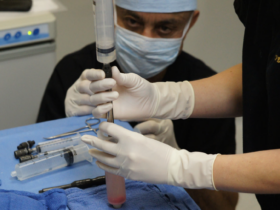One of the new practice models in the physician community is membership medicine—an emerging patient self-pay model.
As it gains traction in the marketplace, some view it with skepticism, some with cynicism, and other have embraced it and are experienceing a measure of success. Many primary care doctors can see the changing landscape of healthcare moving towards alternative care options such as telemedicine and membership medicine (also referred to as concierge medicine). Physicians are often asked to address multiple complex, chronic issues in 15 minutes or less. Patients who have simple problems and do not want to wait 45 minutes to see a provider choose urgent care or, with the emergence of telemedicine, receive on-line visits. As technology makes it easier to communicate via email, through texts and over the phone, antiquated and politi-cally-motivated reimbursement models often prevent these technologies from integrating into standard, daily medical care. How many traditional primary care practices currently include telemedicine options for their patients? Although those service offerings are growing across the country, there is much more potential there currently being left untapped.
The current health insurance climate has also contributed to the conversion of many patients with large deductibles into self-pay customers. In fact, according to the CDC, 40 percent of adults Dr. Sharyl Truty,Balanced Physician Care, Ponte Vedra Beach, FL BETTER CARE: Concierge Medicine Programs in 2016 had a high-deductible health plan, up from 26 percent only five years earlier. Large hospital administrations are often slow to makes changes that will allow the primary care practices to compete in this new emerging self-pay patient market. Self-pay fee schedules are slim to come by for the consumer in the outpa-tient setting and close to non-existent in the hospital setting. Yet, sadly, most large-scale services and procedures are only available through large hospital systems who have the capital to host such advanced testing and procedures.
As patients experience unwanted outcomes from procedures and prescriptions, they are more often seeking answers beyond traditional forms of care. Yet, the providers with the most amount of schooling are often performing 10-minute visits with their patients. In the era of the internet, expertise rather than knowledge is at a premium. Patients come with basic knowledge already in hand and are looking for expertise to help them sort through differing opinions. Furthermore, with this knowledge readily available, emotional support becomes a more valued commodity. As humans influenced by emotions, patients seek comfort, care and guidance rather than quick solutions and prescriptions. Finally, most will admit that true prevention, which invites change, is poorly executed in practice. While preventive testing benchmarks are often met by checking a box during a visit, little time is allowed for in depth counselling.
“Direct Primary Care (DPC) is membership medicine.”
The types of practices that exist vary widely—from large networks that service entire segments of the population, to small solo practices in which one physician alone cares for everything. Some DPC practices have smaller fees and provide a more limited scope of services, while others include a large array of services such as integrative medicine or sports medicine and charge higher rates. Membership fees vary widely and are adaptable to the needs of the different communities embracing direct primary care.

Advantages of Direct Primary Care
With a reimbursement model not dependent on a third-party payer, direct primary care allows practices to expand services without complying to codes that are irrelevant to what each individual patient needs and wants. Services are either covered by the membership or provided a la carte for a transparent rate. Emerging technology is more easily integrated into a DPC practice giving patients direct access to their physician without the inconvenience of waiting in a waiting room for hours. Finally, personalized, emotional support can be delivered alongside quality care because the model enables time to nourish the physician-patient relationship.












Leave a Reply